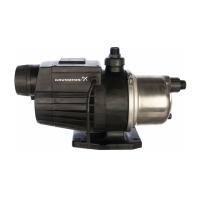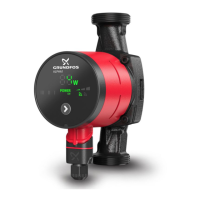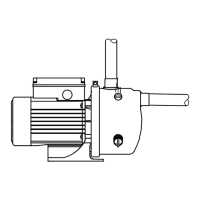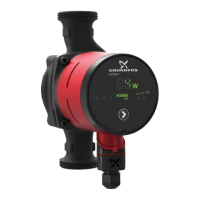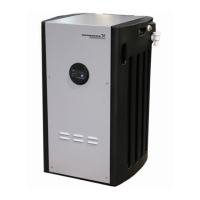12.3 Pressure exchanger of BMSX
DANGER
Electric shock
Death or serious personal injury
‐ Before starting any work on the product, make sure that the power supply has been switched off and that it cannot be
accidentally switched on.
Related information
10.3 BMSX system
12.3.1 Excessive sound pressure level
Cause Remedy
The pressure exchanger is operating above the rated flow rates on
the low-pressure side, high-pressure side or both.
Immediately reduce the flow rate by adjusting the BMS hp pump and
the control valve (13). Balance the system as described in the section
on BMSX system.
To increase the system capacity, add one or more pressure exchanger
pumps in parallel to the existing pumps.
The pressure exchanger pump is operating with little or no back
pressure.
Increase the back pressure by adjusting the concentrate valve.
Balance the system as described in the section on BMSX system.
Air in the system. Vent the system.
Related information
7.4.1 Flow control and balancing
12.3.2
Excessively high recovery in the SWRO system
Cause Remedy
The BMS hs or BMS xl pump is operating at a flow rate that is too
high.
Check that the main BMS hs or BMS xl flow rate does not exceed the
membrane array production capacity for a given temperature, salinity
and fouling factor.
Increased salinity or raw-water temperature. Adjust flow rates in the system.
Related information
10.3 BMSX system
12.3.3
High salinity in the high-pressure seawater feed stream
Cause Remedy
Unbalanced system. See the section on the BMSX system.
A jammed or stalled rotor short-circuits the high-pressure
concentrate with the high-pressure feed water. No exchange occurs;
no audible rotation.
See the fault about a stalled rotor (no audible rotation).
Related information
7.4.1 Flow control and balancing
12.3.4
The low-pressure flow is lower than the high-pressure flow which entails mixing and high feed-water salinity
Cause Remedy
Operating pressure exchanger pumps below the rated flow rate
results in low rotor rotation and increased mixing.
Increase and balance the flows through the pressure exchanger pump.
Do not exceed the recommended maximum flow rates. To increase the
system capacity, add one or more pressure exchanger pumps in
parallel to the existing pumps. See the section on the BMSX system.
Malfunctioning or stalled BMS hp pump. Check the rotation, operation, flow rates and pressures of the BMS hp
pump.
12.3.5 Stalled rotor (no audible rotation)
Cause Remedy
The system is operating above the rated pressure or below the rated
flow capacity.
See the section on the BMSX system.
Debris or foreign particles in the device. Contact Grundfos.
The system is not properly flow-balanced. See the section on the BMSX system.
Related information
7.4.1 Flow control and balancing
12.3.6
Low concentrate flow
Cause Remedy
Excessive pressure losses through the SWRO system. Contact Grundfos.
24
English (GB)

